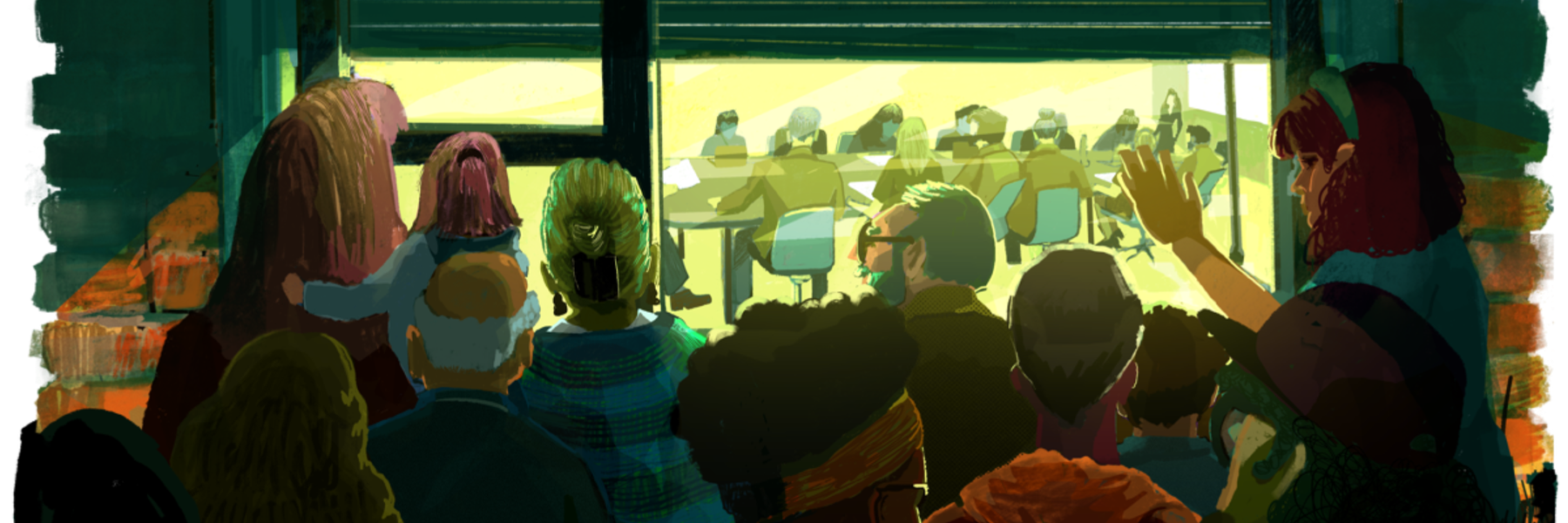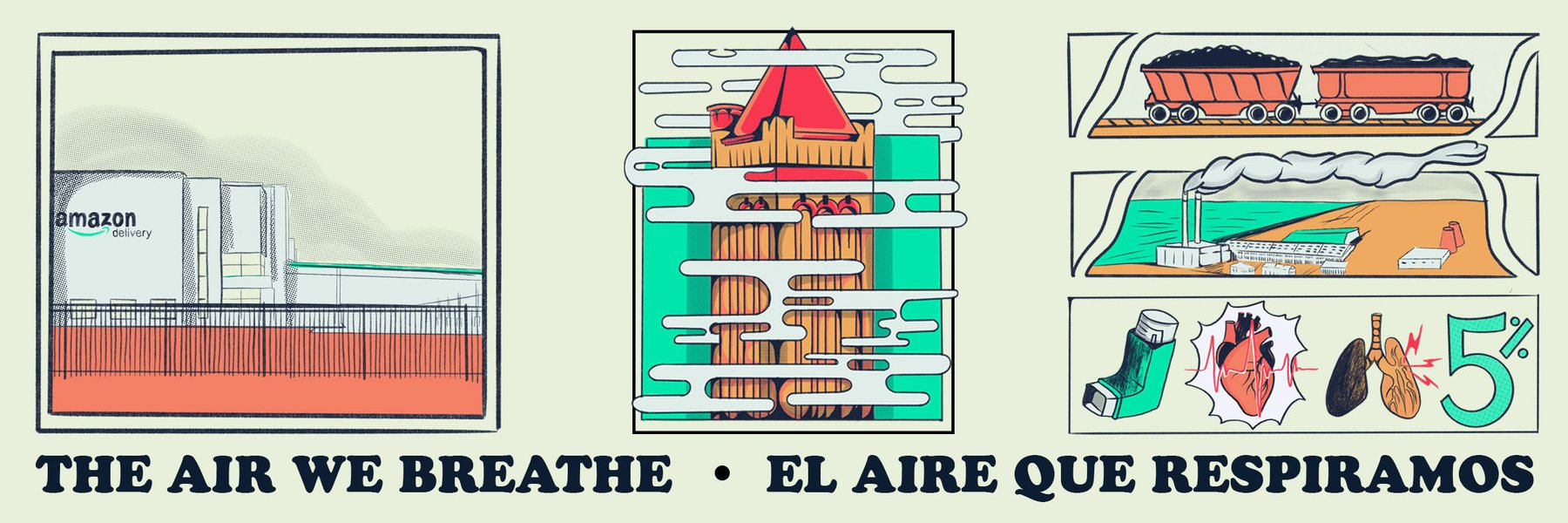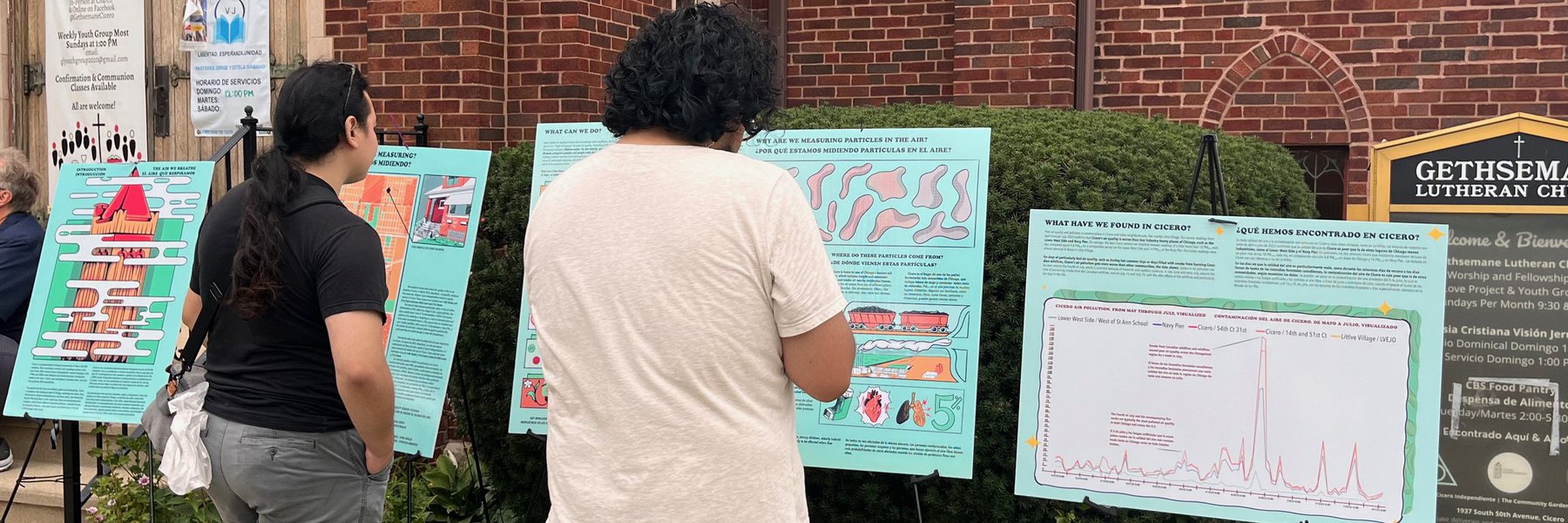Maggie Sivit is the digital and engagement producer for Curious City. Derek Kravitz is the data and investigations editor at MuckRock. Dillon Bergin is a reporter for MuckRock.
Each time we take a breath, the outside world finds its way into our body.

One type of thing in the air is called particulate matter.
Particulate matter — often abbreviated as PM — consists of very small particles suspended in the air we breathe.
These particles could be dust or smoke, tiny drops of water or even chemical compounds.
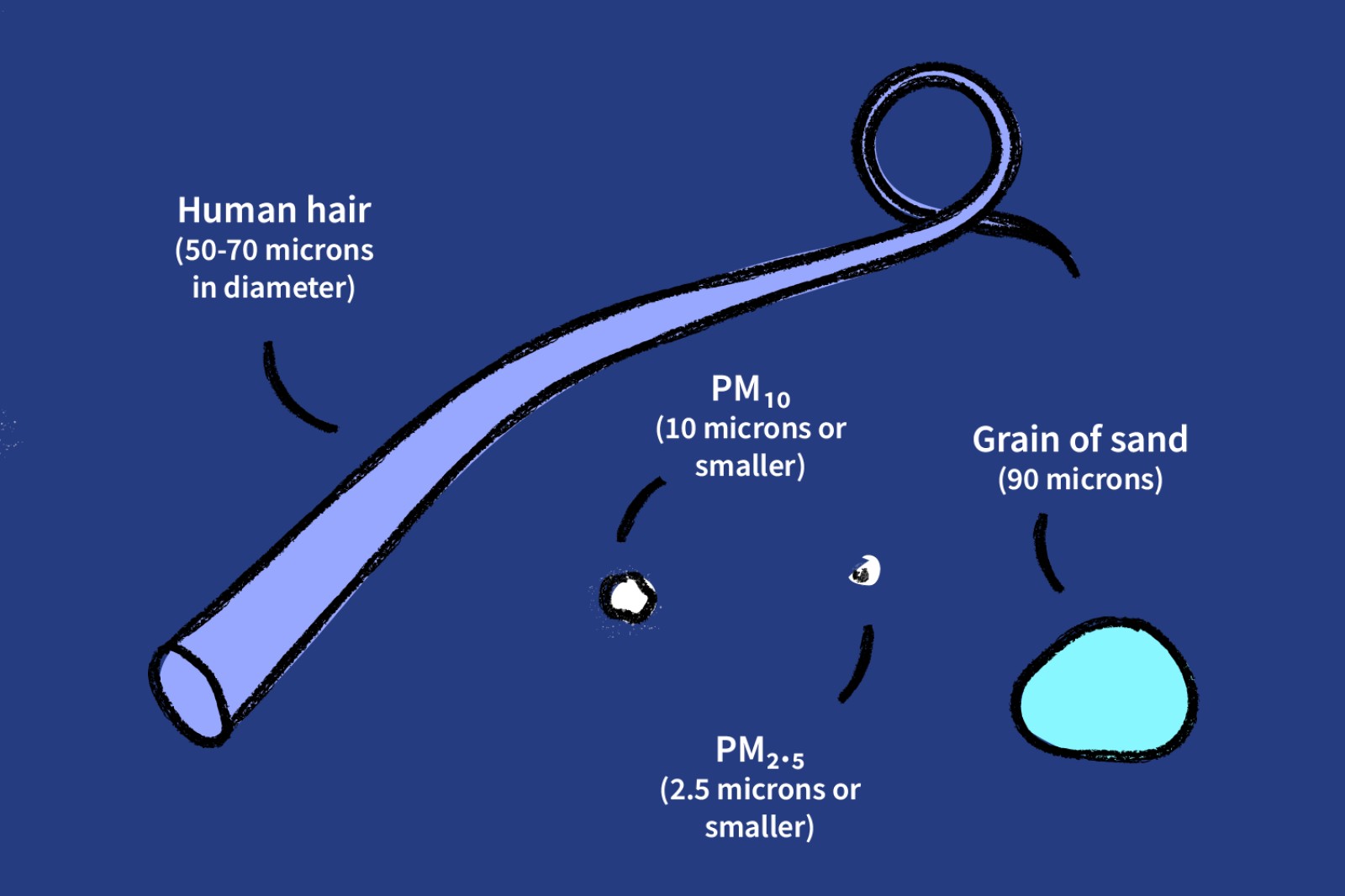
PM is described by its size.
When these particles are very small — about 1/30th the diameter of a human hair — they’re known as PM₂.₅.
Individual particles may be too small to see, but when levels are high, they can make the air look thick and hazy.
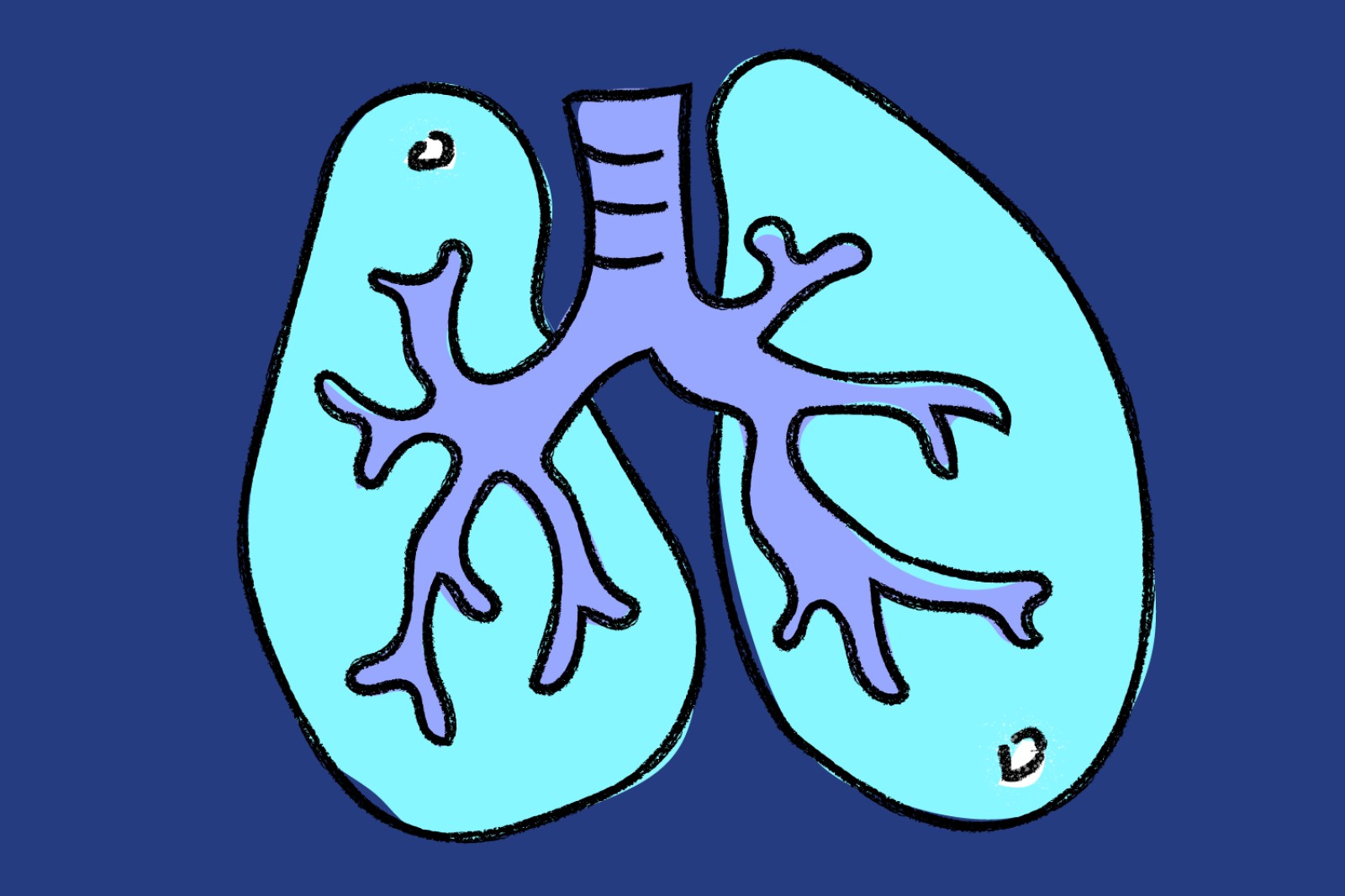
Particles with a diameter of 10 micrometers or less can enter deep inside a person’s lungs.
But the most health-damaging particles are even smaller. Those with a diameter of 2.5 micrometers or less (PM₂.₅) are small enough to get into your bloodstream.
The Chicago area has the third-highest level of PM₂.₅ from diesel in the country, after the Los Angeles and New York City areas.
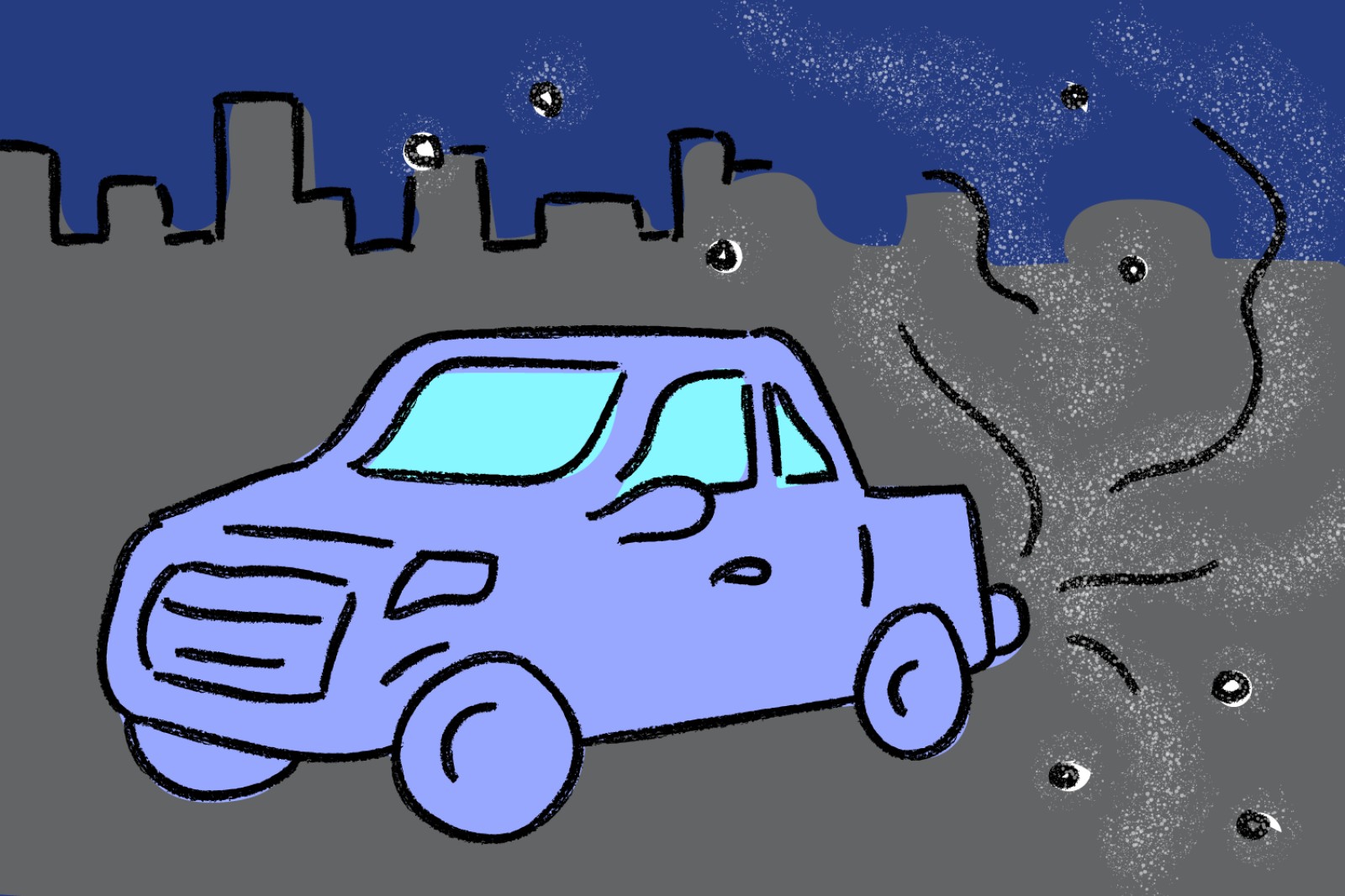
PM₂.₅ in the air comes from lots of different places. Some are familiar, like smokestacks.
Others, like trucks or chimneys, may seem less obvious.
High levels of PM₂.₅ can lead to health issues like asthma, heart attack or chronic obstructive pulmonary disease.
And an estimated 5% of all premature deaths in Chicago can be attributed to PM₂.₅.

Not everyone is impacted the same.
Pregnant people, young children, elderly folks and people who exercise outdoors are more likely to be affected when fine particulate matter levels are high.
So how do we begin to get a picture of what’s going on with our air?

One way is by using air sensors. These sensors detect PM₂.₅ levels in the air and can be placed on bus shelters and other structures.
These sensors already exist in many places across Chicago, and activists are pushing to add even more.

With information from the sensors, we can begin to get a picture of air quality on a neighborhood level that we can communicate to neighbors and loved ones.

